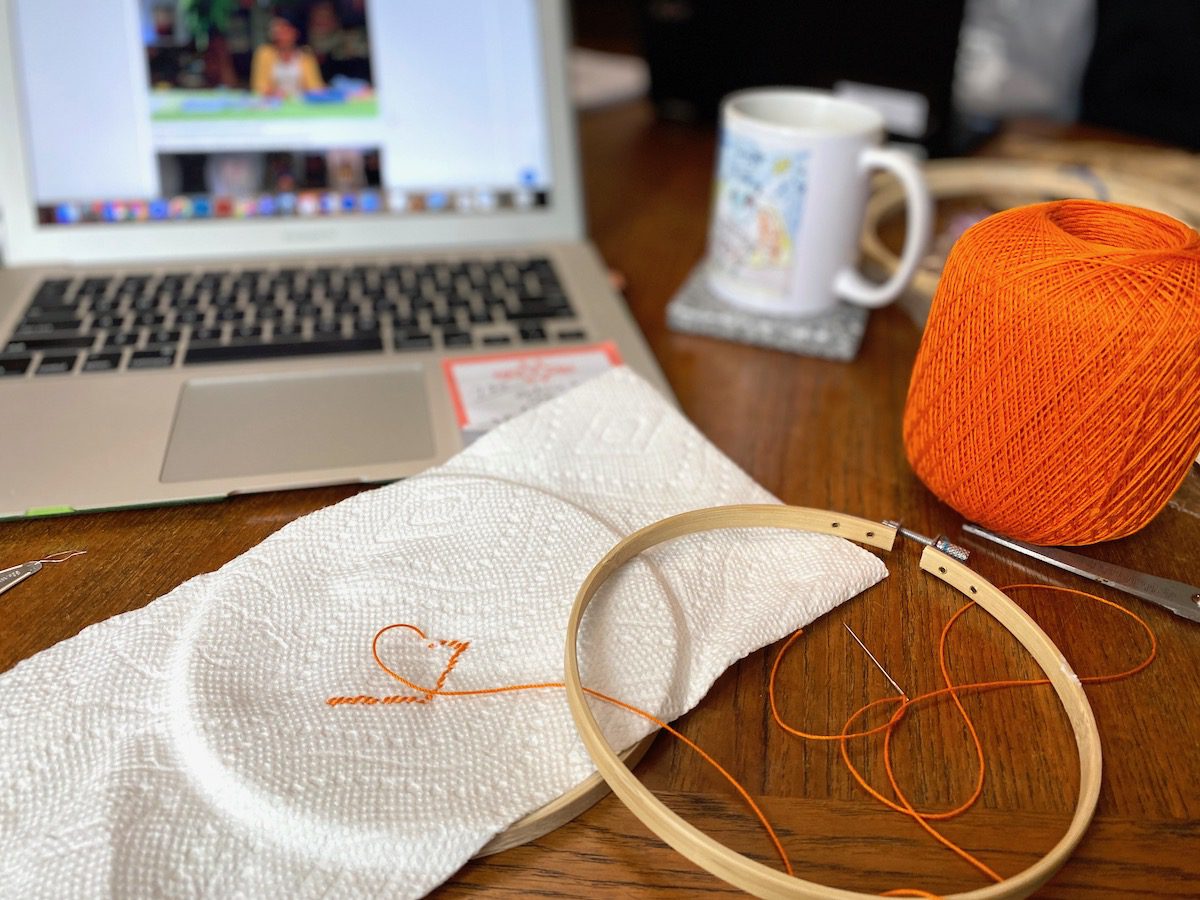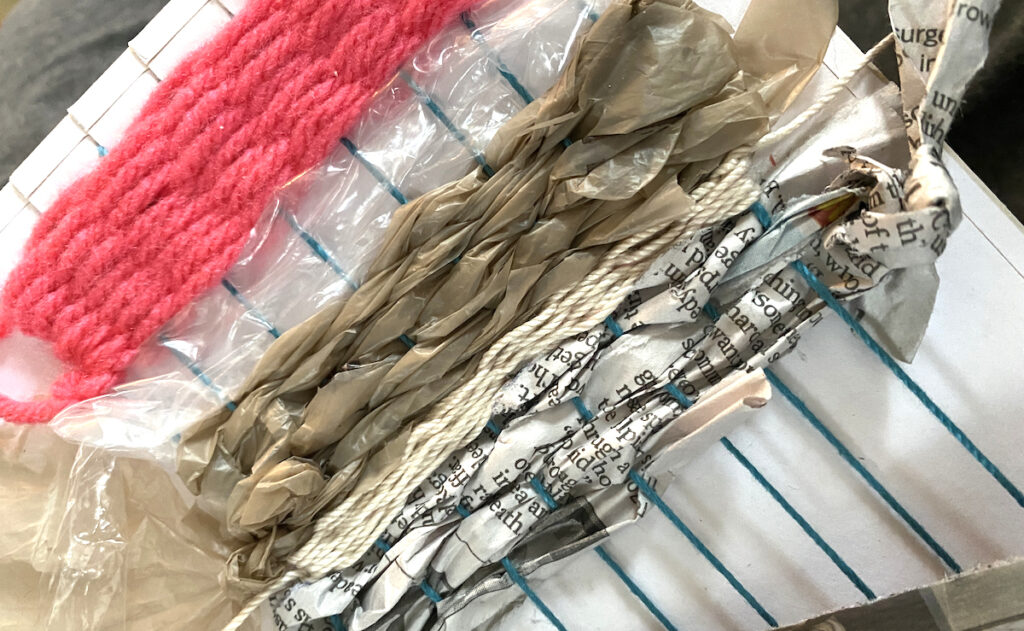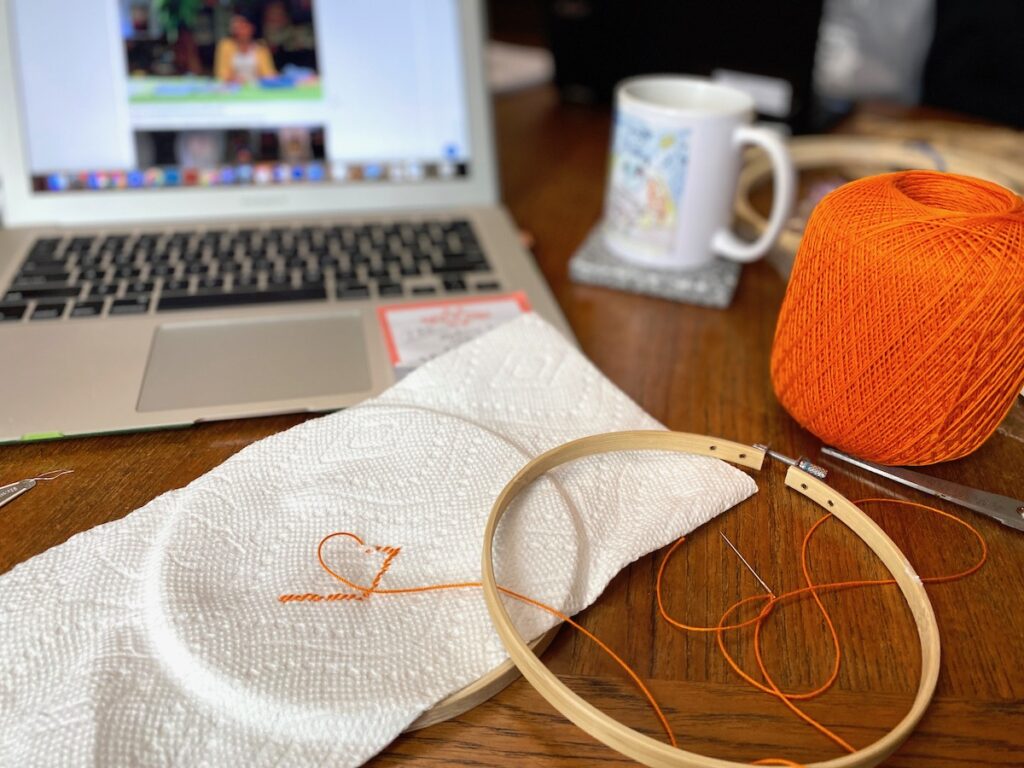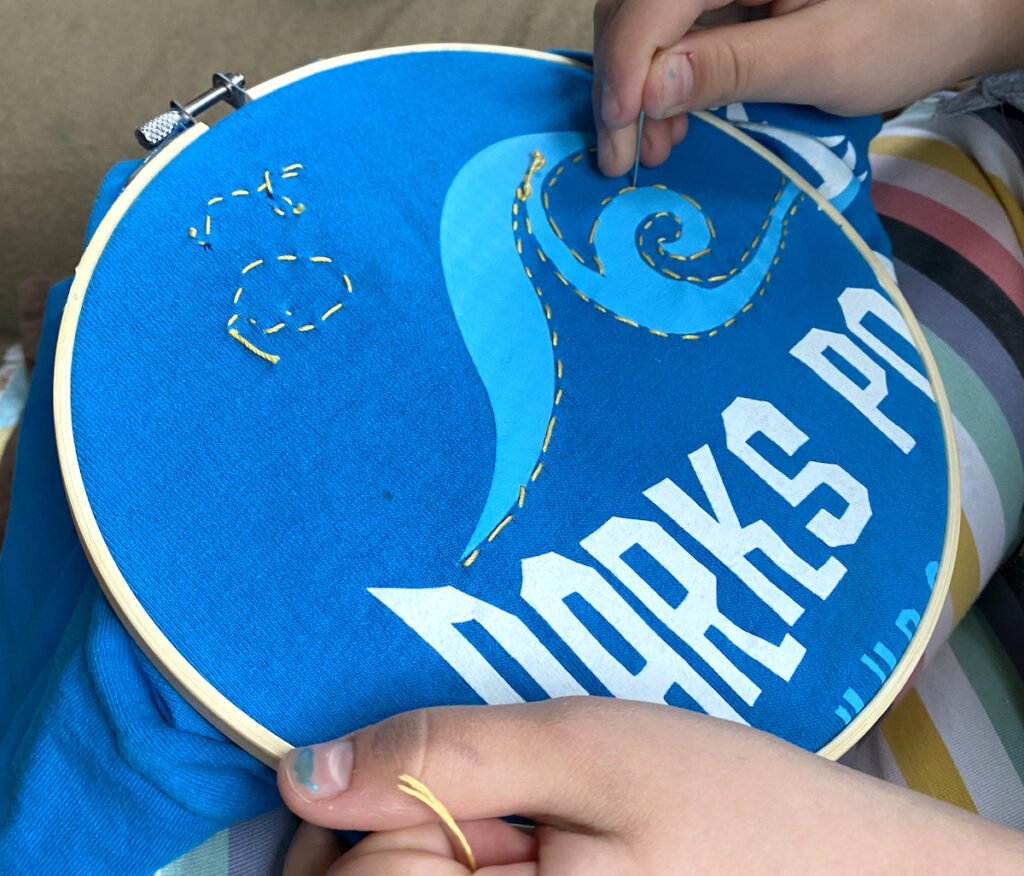It’s tough to be creative during this time, and your funds might be tight. There are always going to be reasons why you shouldn’t take a class on top of your workload, but here are a few unexpected reasons why taking a grad class during our shutdown has kept me sane (or at least slightly more…sane).
The time is always right for a grad class.
I started taking graduate-level courses through AOEU in December to push me along in my district’s salary schedule. Having a master’s degree plus zero for the past ten years had finally forced me to jump back on the bandwagon. I started with Creativity in Crisis. Initially, I was hesitant to add one more piece onto my already tipping plate, but still excited to dig deep into Sir Ken Robinson’s work and discuss big ideas about creativity in our schools.
After you get back into the groove of taking a grad class—including reading and research—you get into a routine and learn to juggle other commitments to fit your new schedule.
Grad classes can help you practice resourcefulness.
The other course in which I enrolled was Fiber Arts. It was next on my list, and a nationwide shutdown was not. When our school closed the building, I started thinking about equitable ways to teach. Even though I had purchased some basic materials per the course materials list, it was time to scrounge around my house and see what else I could use: plastic bags, newspaper, t-shirts that no longer fit, and, of course, some old nasty yarn in the corner of my closet. What could be more appropriate than considering how we teach when we have access to very little?
Enroll in a Graduate Course today.
The routine of a grad class can help you stay grounded.
While we could all use a little “off-time,” taking a graduate course can help you stay grounded in a time of chaos. Having deadlines gives your days and weeks some structure with expectations. You are staying connected with peers who are also in this collective crisis. Discussion board topics remind you, you aren’t alone. If you are feeling stuck or confused as to how to help students in their remote learning, it’s a great way to connect with others who can help brainstorm ideas.
Grad classes help get you out of your comfort zone.
This is a class I have only basic foundational skills in but want to incorporate into the advanced classes to help students get outside of their media comfort zone. Students come to AP from four levels of photography. When we talk about a synthesis of materials or considering options to display work to enhance meaning, they need a wider base. As artists, we rarely produce in isolation of a particular media. Integrating other media into the lower levels helps introduce students to the way artists truly work.
Grad classes force you to flex your creative muscle.
Creating is such an inherent quality truly engrained in an art teacher’s soul. Let’s face it, sometimes you just don’t want to make a frozen pizza, none-the-less create some art. I know I tend to create more when I have something to create for. In this case, a graduate course can help you channel your inner artist and push you to create, even when you don’t feel like it. When getting back into a habit of creating, whether on a small or large scale, it is much like going to the gym. We know we need to exercise, and it does feel good once we go, and cumulatively our bodies and minds feel better in the long run. But I really, really don’t want to. Sometimes creating can feel similar. Forced creating can feel icky, but once you get going, it will clear your mind and get your day off to a better start.
By practicing skills, grad classes help you take a break from screens.
Did I mention remote teaching? So, yes, taking an online art class still requires more computer screen time, however, you do work with your hands. These classes are scaffolded to get you in the mode of practice. New skills, new techniques, trial, and error are part of the format. When I didn’t want to think about choices or do some deep conceptual thinking, it was a perfect time to practice my skills. Weaving, in my case, proved to be the perfect source of meditation and mindfulness. Of course, I used those skills later to create a more conceptual and engaging artwork. But by then, I was ready to process the thoughts and feelings going around in my head.
Through your grad class, you can connect to others.
The most satisfying side effect of the course is while I created, so did my own children. This gave us some much-needed quality time together. When we create together, I’m demonstrating to my own children how important it is to create. I’m showing them how patient I can be when I take time to really teach them something I’m good at. I am reinforcing the value of creating by hand and imagining new worlds. And if that wasn’t enough, when we create together, I’m not getting frustrated about their to-do list of eLearning or their screen time.
So, what are you waiting for?
Taking a grad class right now might seem too overwhelming or simply impractical. However, the long and short-term advantages really pay off. If you’re thinking about taking some grad classes, whether pursuing a master’s degree or taking classes to move along in your pay, or for whatever reason, right now is actually the perfect time. You can’t go on that cruise you planned for this summer, anyway. Might as well create.
What would convince you to take a graduate course?
What is holding you back?
Magazine articles and podcasts are opinions of professional education contributors and do not necessarily represent the position of the Art of Education University (AOEU) or its academic offerings. Contributors use terms in the way they are most often talked about in the scope of their educational experiences.









